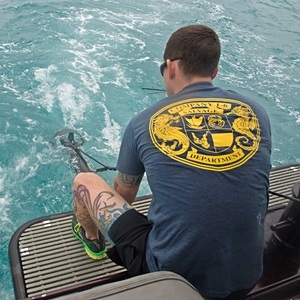
There is a race against time to find the bodies of the passengers who were on board AirAsia Flight QZ8501 that crashed into the Java Sea because bodies deteriorate faster in water.
Grief-stricken family and friends are anxiously waiting for the bodies of their loved ones after recovery teams expanded their search on Monday. However, with each passing day, the work of the search team becomes more challenging.
The plane en route to Singapore departed from the Indonesian city of Surabaya on December 28.
It went down with 162 people: 155 Indonesians, three South Koreans, one Singaporean, one Malaysian, one Briton and a Frenchman, co-pilot Remi Plesel.
37 bodies brought to the surface
Indonesian officials have already recovered the bodies of 37 people and some were still strapped to their seats.
As the massive relief operation entered its ninth day, AFP reported that the operation is prioritising finding the bodies of the victims over wreckage of the plane.
While speed boats have been sweeping the coastline for signs of bodies that may have drifted to shore, diving teams have also been scouring the bottom of the sea.
Dr. Anton Castilani, the director of Indonesia’s Disaster Victims Identification unit, pointed out that speed is of the utmost importance when it comes to maritime disasters.
Sinking bodies
Dr. Castilani, who is a senior police superintendent and a medical doctor, told Wall Street Journal bodies deteriorate more quickly in the water.
He explained to the news agency that:
- a corpse will sink during the first few days,
- then the corpse will float as a result of gases produced by the body, and finally
- the body will sink again after another few days when the stomach explodes.
He said this usually makes it difficult to recover a body, adding that from the second week onwards, identifying a body becomes a lot more difficult.
In order to aid the investigation, some of the bodies will be autopsied to determine the cause of death.
Dying in water
Here are five facts about dying in water, according to the US's FBI Law Enforcement Bulletin (volume 27, number 2 of 2006):
- People commonly lose consciousness within 3 minutes of submersion.
- Factors impacting the time for a body to surface after drowning include: fat content, consumption of beverages and food preceding death, water temperature at the bottom, and depth at the location.
- In warm and shallow water, the gases within the body form rapidly, resulting in a possible rise to the surface within a day or two.
- In deep and cold water, bacterial action takes place slowly, and the corpse may not appear for several weeks.
- No time schedule for the stages of decomposition exists because of the differing water and climatic conditions, but the sequence of events remains relatively constant.
Scientific American noted that sharks are an important scavenger in warm waters and crabs and small fish may feed on the soft parts of the face like the eyes and lips. Science Focus pointed out that the corpse will be dismembered in a week or two and the bones will sink to the seabed.
Also read:
What to do when someone dies
The phases of grief
How do you deal with death?




 Publications
Publications
 Partners
Partners














